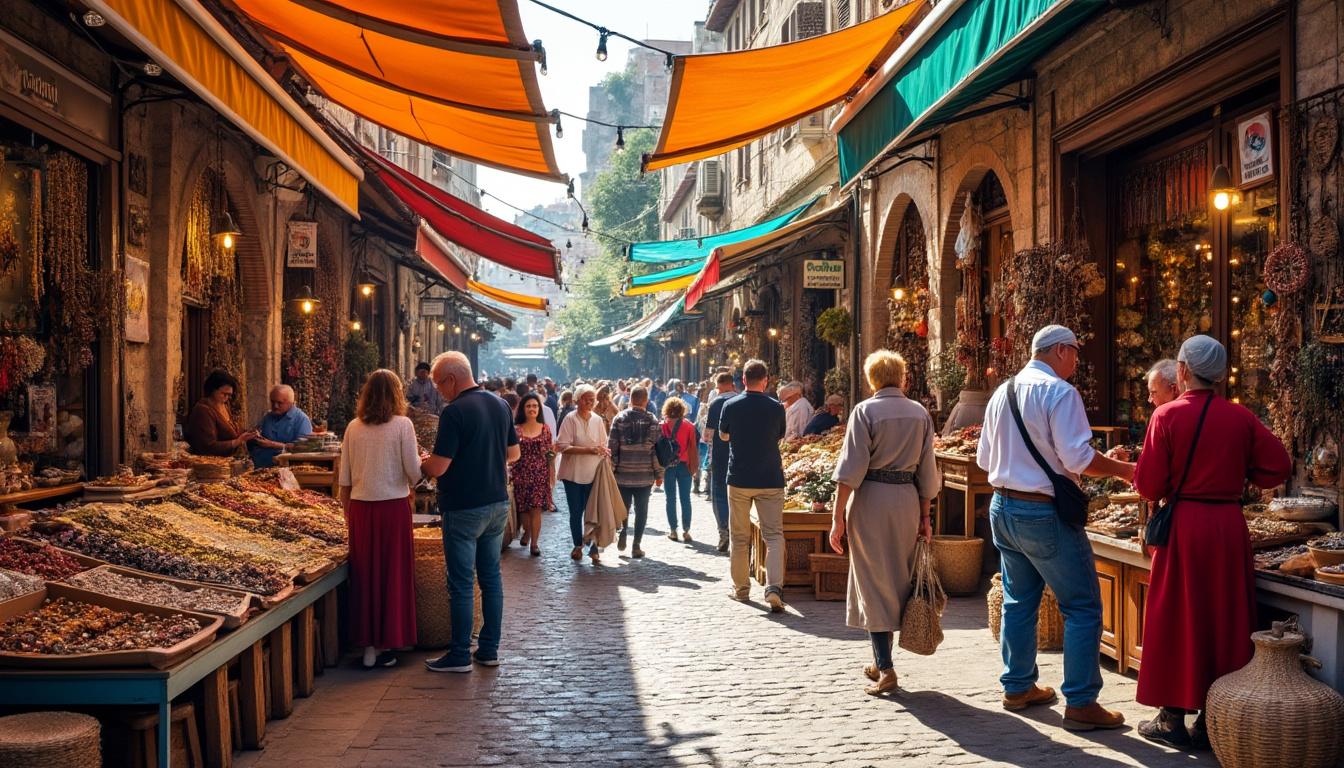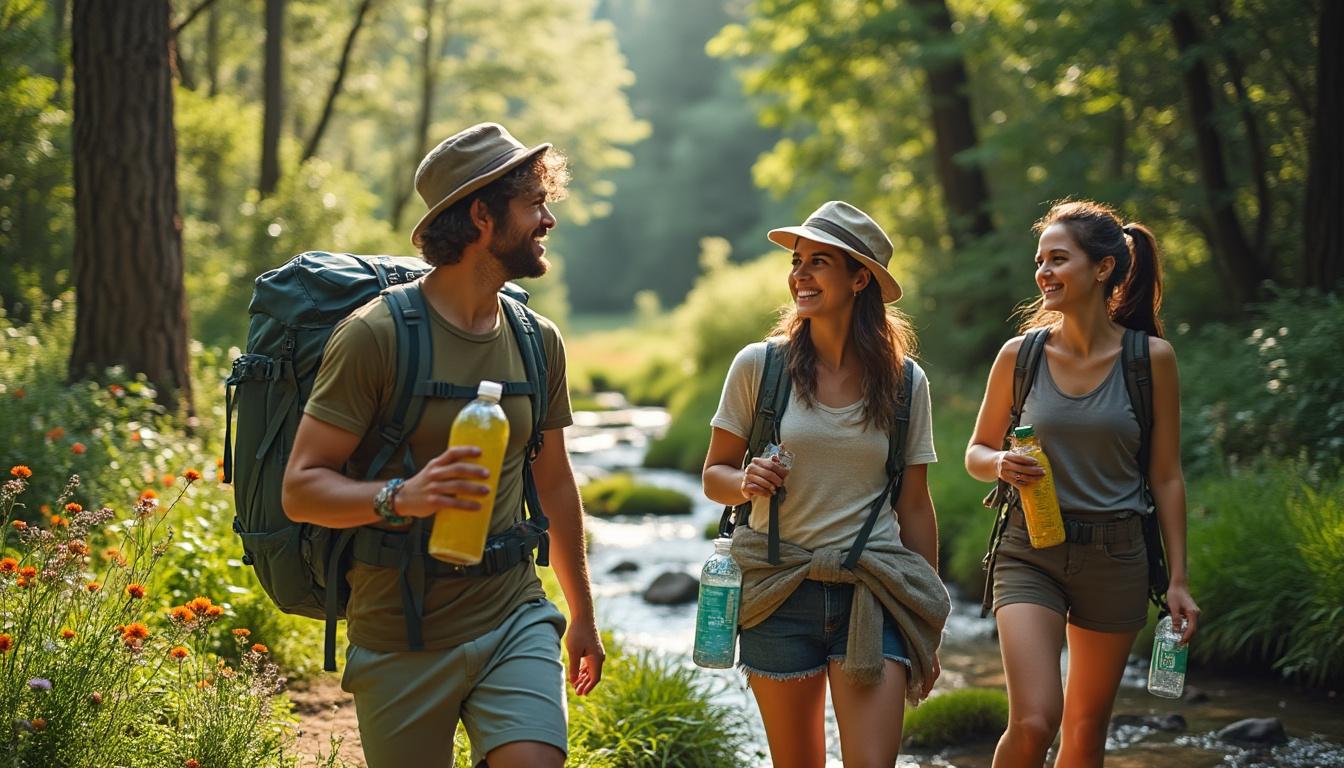In an era defined by fast-paced lifestyles and rapid sightseeing, slow travel emerges as a transformative approach that reshapes how tourism interacts with local economies. This movement encourages travelers to prioritize immersive experiences over ticking off landmark checklists, allowing for a richer connection with the communities they visit. By selecting longer stays in fewer destinations, slow travelers not only foster personal wellbeing and sustainability but also significantly contribute to the socio-economic fabric of local areas. Understanding the multifaceted impact of this mindful travel approach reveals both its potential to revitalize economies and its role in forging deeper cultural bonds.
Slow travel’s rise reflects a growing desire among tourists to engage meaningfully with destinations, challenging the traditional mass tourism model that often sidelines local enterprises in favor of multinational chains. The intentional choice to patronize neighborhood businesses, participate in community events, and prioritize environmentally friendly practices amplifies positive economic outcomes while preserving the unique character of places and cultures. This paradigm shift resonates strongly in 2025, as the travel community seeks responsible and regenerative alternatives.
The Economic Significance of Slow Travel in Supporting Local Businesses
Slow travel is synonymous with immersive stays that enhance direct financial benefits to local economies. Unlike conventional tourism, which often funnels expenditure into large, external corporations, slow travelers spend considerable time and resources in community-run establishments. This includes family-owned accommodations, boutique eateries, craft shops, and local markets.
For instance, companies like Backroads and Much Better Adventures champion slow travel tours that emphasize staying within local communities for extended periods, increasing economic footprints in these areas. Such strategies emerge as powerful countermeasures to overtourism, which can drain resources and destabilize local economies.
Several advantages of slow travel that boost local economies include:
- Increased Spending Per Visitor: Research indicates slow travelers tend to spend up to 60% more on local products and services compared to high-velocity tourists, ensuring a greater infusion of money into the community.
- Support for Small and Medium Enterprises (SMEs): Patronage of independently owned businesses leads to more equitable wealth distribution and entrepreneurship stimulation.
- Job Creation: Sustained visitor presence encourages hiring of local staff, promoting employment stability beyond seasonal spikes.
- Preservation of Local Culture: Economically viable cultural businesses, such as artisan workshops and traditional performances, thrive under slow travel’s authentic engagement.
- Reduced Leakage of Economic Benefits: Unlike mass tourism where profits frequently exit the local economy, slow travel minimizes this leakage, maximizing community reinvestment.
| Economic Impact Aspect | Effect of Slow Travel | Example in Practice |
|---|---|---|
| Spending Increase | Up to 60% more spent locally | Slow travel tourists in Southern Europe |
| SMEs Growth | Boost to small businesses | Local markets and authentic restaurants supported by travelers |
| Job Stability | More year-round employment | Community staff employed in rural guesthouses |
| Cultural Preservation | Economic viability for traditional arts | Artisan craft workshops in Southeast Asia favored by slow travelers |
| Leakage Reduction | Greater local reinvestment | Locally managed tours and accommodations |
Integrating responsible travel principles into slow travel enables destinations to foster sustainable tourism ecosystems. Organizations such as Sustainable Travel International provide frameworks and certifications endorsing practices that protect and empower host communities. These collaborations guide operators and travelers in maximizing positive economic impacts while avoiding pitfalls common in mass tourism.

Enhancing Community Resilience Through Slow Travel
The ripple effects of slow travel extend beyond individual transactions, contributing to the resilience and self-sufficiency of localities. When communities benefit from uninterrupted economic flow and respectful engagement, they gain tools to manage tourist pressures without sacrificing authenticity or environment.
Key elements where slow travel bolsters community resilience include:
- Economic Diversification: Longer-term visitors support a variety of sectors such as agriculture, crafts, gastronomy, and more, reducing dependency on singular tourism streams.
- Strengthening Social Infrastructure: Revenue generated supports education, health, and cultural conservation projects.
- Encouraging Local Leadership: Empowered communities take active roles in shaping sustainable tourism policies.
- Reducing Overtourism Effects: The dispersion of travelers slows tourist crowd intensity, protecting fragile environments and local lifestyles.
An example illustrating these principles in motion is Intrepid Travel’s community-based tours, which collaborate extensively with local stakeholders to ensure benefits are holistically distributed and reinforced. Through such partnerships, destinations engage visitors in authentic interactions that also prioritize ecological and cultural preservation.
| Community Resilience Factor | Contribution of Slow Travel | Case Study/Example |
|---|---|---|
| Economic Diversification | Supports multiple sectors | Agritourism and handicrafts in Tuscany tours by Context Travel |
| Social Infrastructure Funding | Revenue supports local services | Local health initiative funding from sustainable bookings in Costa Rica |
| Empowered Local Governance | Community involvement in tourism planning | Village tourism councils in Nepal supported by Rick Steves Europe guidelines |
| Overtourism Mitigation | Reduced tourist concentration | Rural slow travel routes in New Zealand promoted by Wild Frontiers |
This interconnected approach cultivates an environment where tourism becomes regenerative rather than extractive, ensuring communities maintain control over their cultural and environmental assets. These positive dynamics not only preserve destination allure but also nurture sustainable livelihoods.
Environmental and Economic Synergy: How Slow Travel Benefits Both
Slow travel’s emphasis on quality interaction directly aligns with environmental preservation, a factor essential to the longevity of local economies reliant on natural and cultural resources. By reducing fast transport reliance and promoting local engagement, it helps mitigate degradation caused by more intensive tourism models.
Some integral ways slow travel merges environmental and economic benefits include:
- Lower Carbon Footprint: Extended stays and preference for eco-friendly transport mean travelers reduce emissions considerably compared to frequent short visits.
- Promotion of Eco-Friendly Enterprises: Patronage of sustainable accommodations, local organic eateries, and green-certified attractions supports environmentally conscious business models.
- Conservation Funding: Tourism revenues contribute to habitat protection and restoration projects financed through community partnerships.
- Waste Reduction: Local purchasing encourages zero-waste and minimal packaging practices, which reduce environmental pressure.
Tour companies such as Rick Steves Europe emphasize eco-conscious itineraries that combine immersive cultural experiences with sustainability goals. These thoughtfully curated tours maximize positive economic outcomes while respecting delicate ecosystems and community needs.
| Environmental-Economic Benefit | Slow Travel Contribution | Example Application |
|---|---|---|
| Carbon Emissions Reduction | Fewer flights, more local transport | Train and bike tours promoted by Backroads |
| Sustainable Business Growth | Support for local eco-lodges and restaurants | Community-based eco-tours certified by Sustainable Travel International |
| Conservation Initiatives | Funding via tourist fees and partnerships | Protected area maintenance in Costa Rica |
| Waste Minimization | Local sourcing, less packaging | Farm-to-table dining in rural European hosts |
Proactive choices by travelers and operators align with broader sustainability goals. These collaborations foster resilience, helping local economies flourish in harmony with their ecological contexts, which represents a core theme explored in numerous discussions on why slow travel is sustainable travel.

Challenges and Solutions for Maximizing Economic Benefits Through Slow Travel
Despite its clear benefits, slow travel faces challenges that can limit its positive economic impact if not addressed by stakeholders. Recognizing and overcoming these hurdles is essential for fostering truly sustainable and inclusive tourism economies.
Main challenges include:
- Infrastructure Limitations: Smaller towns often lack adequate transport, accommodation, and amenities to attract and support longer stays from international visitors.
- Seasonality: Local businesses may still face fluctuations in demand, threatening economic stability.
- Awareness and Accessibility: General travelers may lack knowledge or access to slow travel options, preventing the market from scaling effectively.
- Cultural Sensitivity Concerns: Without proper guidance, visitors might inadvertently disrupt cultural norms or strain community relations.
Solutions to these issues involve a collaborative approach, including:
- Investment in Local Infrastructure: Governments and tourism boards should prioritize enhancements tailored to slow travel demographics, such as improving local transit and upgrading sustainable lodging.
- Promotion and Education: Increasing traveler awareness through campaigns led by organizations like Responsible Travel and content from travel guides improves access and acceptance.
- Inclusive Community Planning: Engaging residents in tourism strategy fosters cultural respect and alignment between visitor expectations and local values.
- Diversification of Offerings: Expanding slow travel itineraries across seasons balances demand, benefiting businesses year-round.
| Challenge | Potential Solution | Stakeholders Involved |
|---|---|---|
| Infrastructure Gaps | Investment in transport and sustainable lodging | Government, tourism boards, local entrepreneurs |
| Seasonal Demand Fluctuations | Promote year-round slow travel options | Tour operators, local businesses |
| Low Market Awareness | Educational campaigns and accessible guides | Travel NGOs, media, operators |
| Cultural Clashes | Community engagement in planning and visitor education | Local leaders, tour guides, travelers |
These interventions not only elevate the visitor experience but also bolster the longevity and benefits of slow travel for host economies. Incorporating educational elements ensures visitors contribute positively to cultural understanding and community wellbeing, core facets discussed extensively on platforms like Serenity Trips.
Future Prospects: Scaling Slow Travel’s Economic Impact Globally
As slow travel cements its position as a leading sustainable tourism model, future prospects hinge on increasing scalability without compromising its essential principles.
Instituting frameworks that balance growth with meaningful travel experiences requires coordination across multiple fronts:
- Technological Innovation: Apps and platforms that curate local experiences and slow travel itineraries increase accessibility and customization.
- Policy Support: Governments endorsing slow travel through incentives and infrastructure improvements foster conducive environments.
- Global Collaboration: Networks like Intrepid Travel facilitate responsible travel across continents while sharing best practices.
- Traveler Education: Continuous awareness campaigns emphasize the social and economic benefits of slow travel, encouraging wider adoption.
| Growth Strategy | Expected Outcome | Key Players |
|---|---|---|
| Technology Integration | Enhanced traveler planning and engagement | Tour operators, tech firms, sustainability networks |
| Policy Incentives | Infrastructure and community investment | Governments, local authorities |
| Collaborative Networks | Global responsible travel expansion | International tour companies, NGOs |
| Ongoing Education | Increased traveler commitment and cultural sensitivity | Travel media, educators, community groups |
Such strategic approaches will ensure the tangible benefits of slow travel continue to empower local economies while preserving cultural and environmental integrity worldwide. This vision aligns with the emerging ethos advocated by key stakeholders in the realm of responsible and sustainable tourism, profoundly discussed in One Planet Journey and related forums.

As a 34-year-old Yoga Teacher, I am passionate about guiding others on their journey to mindfulness and well-being. With years of experience in various yoga styles, I create a welcoming environment that encourages personal growth and self-discovery. Join me in exploring the transformative power of yoga.


